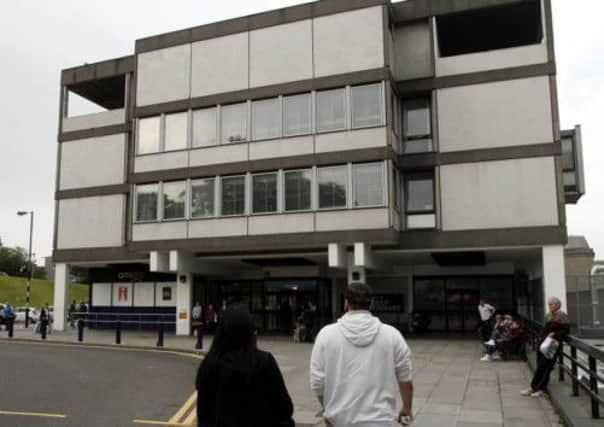Aberdeen surgeon ‘lied that he had removed tumour’


Emmanuel Labram convinced the woman not to seek further treatment by insisting she was fine for two years after the procedure, it was claimed.
Mr Labram assured ‘Patient A’ and her husband everything was fine after operating at Aberdeen Royal Infirmary in September 2008. But the neurosurgeon knew this was untrue and continued the deception by lying to colleagues and forging documents, the Medical Practitioners Tribunal Service heard.
Advertisement
Hide AdAdvertisement
Hide AdPatient A was forced to seek private treatment, but by then the lesion was inoperable.
Craig Sephton, QC, for the General Medical Council, told a misconduct hearing: “It is difficult to understand why Mr Labram initially told the patient and her husband that he had completely removed the lesion when he must have known that no such thing had happened.
“He then lied and lied and lied in order to cover up his initial failure.”
After falling ill on holiday in November, 2007, Patient A consulted her optician and was referred to the Aberdeen Royal Infirmary. An MRI scan revealed a tumour about an inch in diameter, in an area in her brain known as the cavernous sinus, and she saw Mr Labram to discuss her options in June 2008.
She decided to go ahead with an operation and underwent surgery on 2 September.
“After the operation, Mr Labram gave Patient A’s husband a vivid description of how he had removed the tumour and informed Patient A the surgery had gone well,” said Mr Sephton.
“In fact he had not excised the lesion at all, whether in its entirety or otherwise, and Mr Labram must have known he had not done so.”
It is alleged he removed only four tiny hard pale fragments when he knew the tumour was an inch in diameter and recorded in his notes that “biopsies” had been taken.
Advertisement
Hide AdAdvertisement
Hide AdMr Labram even sent letters to the patient’s GP telling him no further treatment was necessary, the panel heard.
“There is no clinical justification not to tell the truth to Patient A or her GP. Mr Labram acted dishonestly in asserting what he knew was not true,” added Mr Sephton.
In January 2009, the surgeon is said to have altered a pathology report and sent a forged copy to his patient in order to conceal the fact she might need further treatment.
Two months later, he failed to tell Patient A that another MRI scan showed the tumour was unchanged, “to conceal the fact to Patient A that he had not removed the lesion and also to maintain the untruthful position he had adopted in 2008”.
Mr Labram changed his stance after a third MRI scan, telling Patient A and her GP that the lesion had returned, when he knew there had been no change.
“One wonders what possible benefit it could be to a patient to say to a patient that a mass she thought had been removed had now significantly returned,” said Mr Sephton.
He again changed his tune in May 2010, telling Patient A that he did not know the tumour was present when he operated, and gave her another doctored pathology report with the author’s signature “pasted” in.
Patient A raised concerns and the hospital’s medical director ordered an investigation.
Advertisement
Hide AdAdvertisement
Hide AdWhen questioned about his actions in January 2011, Mr Labram allegedly continued to lie to bosses, claiming “he did not want to cause further stress to the patient”.
“He was given the opportunity to come clean about the lies he had told and elected to not do so,” explained Mr Sephton.
Mr Labram, of Maryculter, Aberdeen, faces 11 allegations relating to his conduct surrounding the patient’s treatment.
After a failed application to be voluntarily erased from the medical register, Mr Labram withdrew from proceedings. If found guilty of misconduct, he could be banned from the medical profession.
The hearing continues.